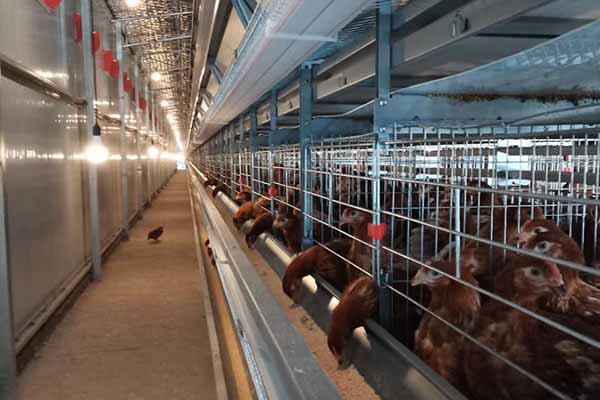The Ultimate Guide to the Best 100,000 Bird Chicken Cages for Commercial Farming
Time : 2025-06-28
Introduction
In the world of commercial poultry farming, the choice of equipment is crucial for the success and efficiency of the operation. When it comes to housing a large number of birds, such as 100,000 chickens, selecting the right chicken cages is paramount. This article delves into the best 100,000 bird chicken cages for commercial farming, offering a comprehensive guide to what to look for and how to optimize your farm’s setup.
Choosing the Right Chicken Cages
Selecting the appropriate chicken cages for your commercial farm requires careful consideration of various factors. Here’s what to keep in mind:
Material
The material of the chicken cages is a critical factor. It should be durable, corrosion-resistant, and easy to clean. Common materials include steel, aluminum, and plastic. Steel cages are strong and long-lasting but can be heavy. Aluminum is lighter but may require more maintenance to prevent corrosion. Plastic cages are often used in high-rise farming systems due to their flexibility and resistance to moisture.
Design
The design of the chicken cages should promote optimal bird welfare and maximize productivity. Look for cages that provide adequate space for each bird, ensuring they can move comfortably without injury. The design should also allow for easy feeding, watering, and waste management. Slatted floors are commonly used to prevent disease and facilitate cleaning.
Capacity
When considering the capacity of your chicken cages, ensure that it aligns with the number of birds you plan to house. Overcrowding can lead to stress, disease, and decreased productivity. A good rule of thumb is to allocate about 2-3 square feet per bird in a layer cage system and 3-4 square feet in a grower system.
Ventilation and Temperature Control
Proper ventilation is essential for maintaining a healthy environment. Cages should have adequate ventilation to keep the air fresh and control temperature fluctuations. In addition, consider the placement of the cages in relation to natural light and any heating or cooling systems you might use.
Accessibility
Accessibility is another important aspect to consider. Cages should be designed for ease of use when it comes to feeding, watering, and collecting eggs. The placement of waterers, feeders, and egg collection points should be optimized for efficiency.
Top 10 Chicken Cages for 100,000 Birds
1. High-Volume Layer Cages: Designed for layers, these cages offer a high capacity and are suitable for confined systems.
2. Brooder Cages: For younger birds, these cages are designed with lower wire spacing to prevent pecking and fighting.
3. Rack Systems: These provide a stacked, efficient arrangement of cages, ideal for maximizing space in a commercial farm.
4. Free-Range Chicken Coops: For farms looking to implement a more humane system, these coops offer more space and a natural environment.
5. Automatic Egg Collecting Cages: These cages feature automated systems for egg collection, reducing labor costs.
6. Feeding and Watering Systems: Integrated into the cages, these systems ensure that each bird has access to food and water at all times.
7. Ventilation and Environmental Control Systems: These systems help maintain optimal conditions within the cages.
8. Health Management Cages: Designed to facilitate health checks and disease prevention, these cages often come with features like health monitoring systems.
9. Eco-Friendly Cages: These cages are made from sustainable materials and are designed to minimize the farm’s environmental impact.
10. Customizable Cages: For unique farm needs, these cages can be tailored to meet specific requirements.
Installation and Maintenance
Proper installation and regular maintenance are essential for the longevity and effectiveness of your chicken cages. Here are some key points to consider:
Installation
Ensure that the installation team has the necessary expertise. The ground should be level and properly anchored to support the weight of the cages. It’s also important to consider the electrical needs for the automated systems and ensure they are installed correctly.
Maintenance
Regular cleaning is vital to prevent disease and keep the environment hygienic. This includes washing the cages, floors, and feeders. Inspections should be conducted regularly to check for any signs of wear and tear. Repairs should be made promptly to avoid further damage.
Conclusion
Selecting the best chicken cages for a 100,000 bird commercial farm requires a thorough understanding of your farm’s specific needs and the characteristics of different cage options. By considering factors like material, design, capacity, ventilation, and accessibility, you can create an efficient and welfare-friendly environment for your birds. Investing in high-quality, professionally designed cages is a step towards a successful and sustainable commercial poultry farming operation.












